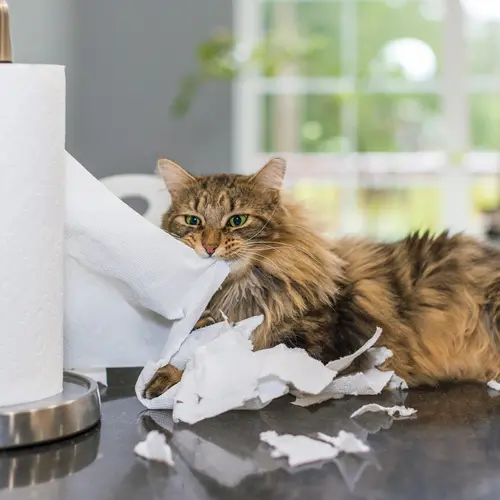Horner's syndrome is a neurological condition that affects cats, dogs, horses, and various other animal species. It causes issues with the muscles in the face and the appearance of the eyes. If your cat has Horner's syndrome, you may notice that one of your cat’s eyes looks sunken, as if it has slipped back into the eye socket. Eyelid movements may be affected, as well.
The syndrome is usually related to an underlying illness or injury. Your cat's recovery will depend on what caused the syndrome.
What Is Horner's Syndrome in Cats?
Horner's syndrome is usually a symptom of a problem with the cat's sympathetic nervous system. The sympathetic nervous response is part of the autonomic nervous system, which triggers automatic physical reactions. Breathing, heart function, and digestion are all autonomic functions.
The autonomic nervous system is also responsible for how cats’ eyes function. For example, nerves signal your cat’s pupils dilate and contract due to changing light. When a cat has Horner’s syndrome, the nerves don’t carry signals properly. Your cat’s eyes and the muscles in their face won’t function typically, which results in the characteristic appearance that comes with Horner’s syndrome.
What Causes Horner's Syndrome in Cats?
Horner's syndrome in cats is usually caused by an injury or illness that has damaged the nerves leading to the face. Some causes for Horner's syndrome in cats include:
- Brain tumor
- Chest tumor
- Ear infection
- Neck injury
- Spinal cord injury
- Neurological disease
Your vet will need to figure out what is affecting the nerves in your cat's face. They will ask you about any recent injuries or illnesses. They will also examine your cat's eyes, ears, chest, and neck. Your cat may need X-rays to check if there are any growths or tumors causing the neurological symptoms.
In some cases, Horner's syndrome is idiopathic, which means there is no known cause.
What Are the Symptoms of Horner’s Syndrome in Cats?
The signs of Horner's syndrome in cats include changes to the way eyes look and function, such as:
Upper eyelid droops. The muscles around your cat's eyes will relax, and their eyelid will look droopy, as if the eye is half-closed. The cat may not blink with that eye, or blinking movement may be slow.
Eye appears sunken. As previously mentioned, the relaxation of the facial muscles will cause the eyeball to move back into the eye socket. It makes the cat's eyes sunken or hollow looking.
Pupil is smaller than usual. The black part of your cat's eye will look very small as if they are sitting in bright light. The pupil won't dilate or get larger, even if the light changes.
Third eyelid looks irritated and protrudes. The third eyelid in cats is sometimes called a nictating membrane. It sits in the inside corner of your cat's eye and serves to protect and clean the eyeball. You may notice it when your cat blinks or if their eyes are partially open during sleep. In cases of Horner's syndrome, the third eyelid is visible even when the cat's eyes are open. It might look irritated or inflamed.
Horner's syndrome usually only affects one eye, but it can affect both.
What Is the Treatment for Horner's Syndrome in Cats?
The treatment plan for your cat will depend on the cause of neurological problems. If an injury or infection is causing the issues, your vet may prescribe medicine to clear up an infection or reduce inflammation.
If there isn't a known cause for Horner's syndrome, your vet might suggest watchful waiting, where you monitor your cat for any changes over time. Many cases for Horner's syndrome clear up on their own without treatment, so watchful waiting might be all that's needed. It may take several months for the symptoms to fade, though.
If your cat has difficulty blinking, you may need to give them eye drops. Lubricating drops will keep the eye moist and protect it from damage. Your vet might also suggest phenylephrine drops to dilate the pupil and improve your cat's vision.
If your cat has a cancerous tumor or another type of lesion, you and your vet will need to discuss treatment options. Your cat may need surgery or chemotherapy. Sometimes, Horner's syndrome is associated with a serious degenerative nervous system condition called feline dysautonomia. Your vet will suggest treatment or options for keeping your cat comfortable if that is your cat's diagnosis.
